Mention the title Cheaper by the Dozen and most folks know it refers to a story about a family with twelve children. Before there were completely unrelated movies starring Steve Martin, however, there was the original book about the unique Gilbreth family, written by two of the children. This was followed by Belles on Their Toes, set after the death of the family patriarch, and later by several others, including Time Out for Happiness, a more serious family biography, and Rings Around Us, in which Ernestine writes about her own married life. Three out of the four are quite charming, and those aren’t bad odds!
Cheaper by the Dozen by Frank B. Gilbreth, Jr. and Ernestine Gilbreth Carey
When I embarked upon reading Cheaper by the Dozen, I figured I was in for a warm-hearted memoir about the clever antics of twelve mischievous kids living in the early 20th century. And I did get that. There are stories here about playing pranks on the psychologist evaluating their intelligence and about young boys saying impertinent things to guests at dinner, about rousting a peeping tom from a tree and manipulating the family council system in order to get a dog.
What I didn’t anticipate, however, was that the real purpose of the book is to lovingly depict the Gilbreth parents, Frank and Lillian. I am a sucker for awesome dads, and have loved quite a few, but Mr. Gilbreth might just take the cake. He’s voluble, loud, and charming, with a zest for life and learning that leads him to devote his career to developing time-saving measures for various industries. He teaches his kids all manner of things, from languages to Morse code to nifty multiplication tricks, and at first it seems like he’s doing this just to satisfy his own curiosity—and, yes, that’s part of it—but in reality, it’s so that they’ll be able to get along without him and not be a burden to their mother when he is gone. For, you see, he hasn’t told them that he’s got a bad heart.
There is much to smile and laugh at in this book, but the end had me sobbing. In a good way. In the way that makes you want to read the book again so that you can love it even more intensely. I feel like fans of this book could meet each other and exchange a single word—mumblety-peg—and understand each other perfectly.
Belles on Their Toes by Frank B. Gilbreth, Jr. and Ernestine Gilbreth Carey
Where Cheaper by the Dozen serves as loving tribute to Frank B. Gilbreth, Sr., Belles on Their Toes is “primarily the story of Mother.” Overshadowed somewhat by her charismatic husband in the previous book, Lillian shines here as a strong and capable mother defying social conventions and attitudes by taking up the reins of her husband’s business in order to secure sufficient income to not only keep the family together but send each child to college, as Frank wanted. There’s a marvelous passage early on that explains how Lillian overcame her timidity that left me sniffling.
There was a time when Mother wept easily, when she was afraid of walking alone at night, when a lightning storm would send her shuddering into a dark closet.
All that ended the day Dad died. It ended because it had to end. It ended because of the realization that what she really feared was that something would separate them.
Well, what she feared had happened, and tears would not wash out a word of it. So she gave his speech in London and presided for him in Prague. And she was not afraid any more.
I get a bit verklempt now, just typing that.
Belles on Their Toes also focuses a lot on the oldest daughters, as they develop into women and eventually bring beaus home to meet the family. I’m particularly fond of sensible Martha, who has no idea she’s become shapely and sought-after and devotes herself to principles of frugality. That’s not to say that pranks and mischief are entirely absent, however! Near the end, the pace of the story picks up a great deal, skipping over some of the middle children to cover the high school graduation of the youngest (Jane), followed by a family reunion in which three of Lillian’s grandchildren are christened in the same church as their parents.
It’s a very satisfying conclusion and most people would probably feel content to stop here. With a little research and a couple of interlibrary loans, however, I’ve unearthed a couple of other books about the family that are less well known.
Time Out for Happiness by Frank B. Gilbreth, Jr.
Whereas the first two books “stressed the comical aspects of raising a big family by Motion Study methods,” Time Out for Happiness puts the emphasis on Frank and Lillian’s work in the field of “scientific management.” You might think this sounds dull, but actually there are enough amusing anecdotes and big personalities (like “plump and boisterous” Frank) to make for quite an absorbing read.
Time Out for Happiness also dwells more on the family backgrounds for Frank and Lillian, as well as the early days of their courtship and marriage. Some of the material is familiar, but most of it is new. (Interestingly, a few small details are different here, like which child made what remark or what handyman Tom named his cats. Were those embellished the first time around?) I welcomed the insight into what Frank and Lillian were hoping to accomplish with Motion Study, especially the fact that Lillian was very much an equal partner.
Indeed, while gregarious Frank initially captures one’s heart, by the end one realizes how truly remarkable Lillie was. For a woman to get a Master’s degree in 1902 (followed by a PhD in 1914) was no small feat, and she was the first woman to receive honorary membership in several influential engineering societies. After Frank’s death in 1924, Lillie continued to espouse the Gilbreth method for over 40 years, eventually earning the public recognition of their endeavors that she’d long been seeking.
The one drawback to reading this book is that it makes one feel a serious underachiever. There were so many opportunities to think and do new things in the early 20th century that I don’t know now whether such chances simply don’t exist anymore or if I am just not personally bright enough to see them.
At any rate, this may be a more factual account of the family history, but it’s no less entertaining.
Rings Around Us by Ernestine Gilbreth Carey
Out of the four books on the Gilbreth family that I read, I liked Rings Around Us—the story of Ernestine’s married life—the least. I found it to be lacking the warmth of the earlier books, and I’m not sure whether to attribute that to the lack of Lillian or to the lack of Frank, Jr. as writing partner. Probably it’s a combination of both.
In September 1929, when she is a 21-year-old working girl in New York City, Ernestine Gilbreth meets Charles Carey. They hit it off immediately and are married in 1930. The book recounts their many apartments in the city, the many nurses they hire to take care of their daughter while Ernestine works, and the eventual decision to move to Long Island, where the kids have plenty of friends and room to roam and where the Carey parents experience the joy of tending a garden and the sorrows of home maintenance.
The problem is… Charles (called “Chick” by Ernestine) is a product of his time, in that he is a sexist git. He frequently makes comments about women and though he occasionally condescends to help Ernestine with meals and dishes, his attitudes eventually begin to wear off on his son. Ernestine chafes at his notions, but doesn’t get her dander up as much as I would’ve liked. But no matter, because she herself is sizeist. Many, many times she describes a person by their weight, be it the nurse whose bosoms she compares to watermelons or the dance teacher her daughter adores, “all two hundred pounds of her.” This attitude, too, wears off on the kids, as a later chapter dwells upon a game they invent wherein you score points for spotting fat people on the beach. The game is called “Whale.”
Nice. Really nice. Thanks for leaving me with a sour taste in my mouth, Ernestine.


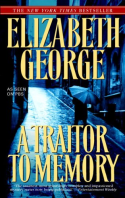
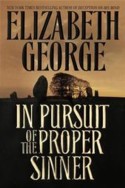
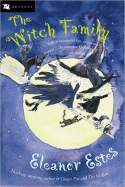
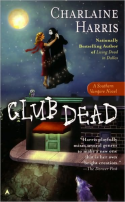


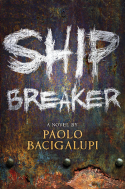
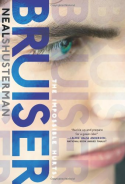



Recent Comments